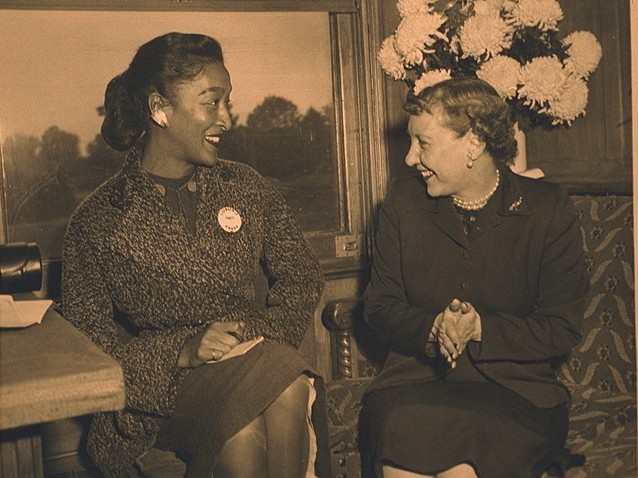
by Yanick Rice Lamb | Aug 18, 2018 | |
Publication No. 10 Pending Research Article Accepted for Publication Lamb, Y.R. “Multiple Sclerosis.” Health and Wellness for People of Color: An Encyclopedia of Issues, Problems and Solutions. Copeland, V.C., ed. Santa Barbara CA: ABC-CLIO/Greenwood. Synopsis/Impact My 3,000-word article on multiple sclerosis will be part of a two-volume workto be published in 2019. It will help to dispel myths that MS doesn’t affect African Americans. In fact, the risk is 47 percent higher and three times higher for black women than for black men, according to a 2013 study in Neurology. MS can also strike harder — with more complications, relapses and disability. For example, a 2004 study in Neurologyindicates that African Americans require wheelchairs eight years sooner. Summary of the Work From the Editor The U.S. Department of Health and Human Services, Office of Minority Health found that people of color face significant health disparities, both in disease and illness and in access to health care. This comprehensive reference work explores health issues and racial and ethnic minorities and will include everything from health insurance and access to medical care to a wide range of health issues. Entries will provide broad information on health topics as well as specific information as it relates to youth and adults within racial and ethnic minority groups – African American, American Indians, Asian Americans, and Latinos. A-Z entries and sidebars provide up-to-date information and include statistics, data, and other resources. — Valire Carr Copeland, Ph.D., MPH Kym Sellers tried experimental stem cell treatment for multiple sclerosis. (Photo: Fox 8/Cleveland) Article: Health and Wellness for People of Color An Encyclopedia of Issues, Problems, and Solutions...

by Yanick Rice Lamb | Aug 10, 2018 | |
Publication No. 8 Pending Research Refereed Journal Article (Under Review) Lamb, Y.R. (Under review). “The Impact of Body Mass Index on Women’s Physical Health Ratings, Fibroids, Anemia and Infertility.” Journal of the National Medical Association (Elsevier). Abstract Obesity is considered a global epidemic that will be the leading cause of death by 2020, according to the World Health Organization (WHO). This research supports the regression-related central organizing hypothesis (COH) that the Body Mass Index is explainable by physical health ratings for women across racial and ethnic groups and their self-reports of diagnosed fibroids, anemia and infertility. Multiple regression and percent distribution were used to address the COH by analyzing data from the Collaborative Psychiatric Epidemiology Surveys (CPES) as part of the National Survey of American Life (NSAL), 2001-2003. Based on the differential effects theory, this research helps to fill a void in the literature on reproductive health through the lens of obesity as it relates to race, ethnicity and gender. It may also have clinical and public health implications, such as enhancing awareness and wellness outcomes among black women who suffer disproportionately from obesity, infertility, fibroids and anemia, which is a risk factor for pregnancy complications and low birthweight. Impact The intersection of reproductive health and obesity are rarely discussed as they relate to black women, who are already disproportionately affected by health disparities. African-American women are at the center of the global obesity epidemic that WHO predicts will be the leading cause of death by 2020. About four out of five African-American women are overweight or obese — the highest rate of any group in the United States (Office...

by Yanick Rice Lamb | Jun 24, 2018 | |
Publication No. 7 Refereed Article Title: “All the News That Fits on Tablets: An Analysis of News Consumption and Best Practices,” http://www.aejmc.org/home/2013/08/industry-research-2/, August 2013 Author(s) Lamb, Yanick Rice Recognition AEJMC Council of Affiliates Second Annual Industry Research Award AEJMC Synopsis The AEJMC Council of Affiliates Annual Industry Research Forum competition began with AEJMC’s Centennial conference in August in Chicago. The interdependence between the academy and the professional and industry organizations it serves provides an opportunity for collaboration on research that can benefit everyone. The Council of Affiliates of AEJMC, which consists of 35 member organizations related to the fields of journalism and mass communication, sponsors an annual Industry Research Forum designed to strengthen the academy/industry link. The 2013 winners each presented their research at the AEJMC Conference in Washington, DC. The winners are as follows, and their research can be found here: “All the News That Fits on Tablets: An Analysis of News Consumption and Best Practices,” Yanick Rice Lamb, Howard University “Social Media And Journalism: What Works Best And Why It Matters,” Sue Burzynski Bullard, University of Nebraska-Lincoln Abstract In light of the biggest media revolution since the debut of radio and television, this paper seeks to analyze whether newspapers and magazines are effectively using iPads and other tablets to serve readers and remain competitive. This will include examining whether news organizations are making the most of the technology, explaining the production and financial challenges, determining best practices, looking at the future and assessing what attracts and keeps...

by Yanick Rice Lamb | Jun 23, 2018 | |
Publication No. 9 Title: Evelyn Cunningham: The Pittsburgh Courier’s “Lynching Editor” Author(s): Lamb, Yanick Rice Refereed Journal Article (Under review by the Journalism, Sage Publishing) Abstract From 1943 to 1962, Evelyn Cunningham was a reporter and columnist for the Pittsburgh Courier, a leading black newspaper. She also spent five years as a radio host, interviewing newsmakers ranging from Malcolm X to Sammy Davis Jr. Known as the “lynching editor,” Cunningham was among the few women who covered the hot spots of the Civil Rights Movement. She chronicled an important chapter in U.S. history, not only as a correspondent for the black press but also as a stringer for New York dailies. However, little is known about Cunningham’s role as a journalist and witness to history. My ongoing research attempts to correct this through in-depth interviews with Cunningham, her peers, and observers, as well as a review of her work, papers, and articles about this pioneer. Click here to read PDF. I’ve also been invited to submit a chapter on this topic to a book titled To Make the World Better, edited by Dorothy Gilliam, former columnist of the Washington Post, and Angela Dodson, an editor at Diverse Issues in Higher Education, formerly of the N.Y. Times and Black Issues Book...

by Yanick Rice Lamb | Jun 1, 2018 | |
Publication No. 4 Special Issue of Journal and Overview Article Byerly, C., and Lamb, Y.R., eds. 2019. Kerner @ 50: Communication and the Politics of Race in the United States. Special issue of the Howard Journal of Communications. United Kingdom: Taylor & Francis Group. Role: Serving as co-editor in conceiving, developing and editing journal, and a first author on the overview article. Overview article by first author, Lamb, Y.R., and Byerly, C. 2018. Kerner @ 50: Communication and the Politics of Race in the United States. Preliminary online content: https://www.tandfonline.com/doi/full/10.1080/10646175.2018.1442265 Synopsis and Impact: In 1968, following a series of violent urban rebellions, the National Advisory Commission on Civil Disorders released its “Kerner Report” concluding that the United States was “moving toward two societies, one black, one white – separate and unequal.” The “Kerner Commission,” nicknamed for its chairman Governor Otto Kerner of Illinois, laid part of the blame for these rebellions at the feet of the news media for their imbalanced coverage and hiring practices. As a result, the report said, an almost entirely white core of reporters and editors in the nation’s media had failed to report adequately on race relations, particularly omitting the difficulties experienced by those in inner cities. Successive generations of news leaders have tried and failed to reach goals of parity in making mainstream newsrooms reflect the country’s demographics. Some studies show that neither have those media yet been able to adequately cover race matters in a nation experiencing an ongoing “browning of America” and the emergence of a new era of race-related civil unrest and violence. Scholars and media practitioners have submitted both commentaries and scholarly manuscripts...







Recent Comments